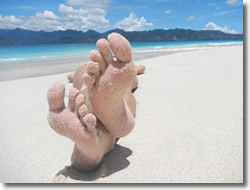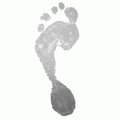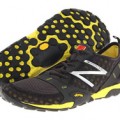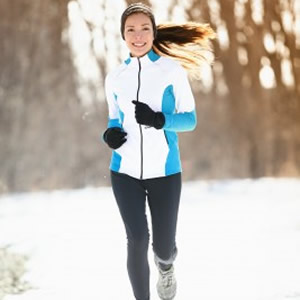When assessing the fit of new running shoes, it is important that you fit shoes to your feet rather than trying to fit your feet to the shoes. One of the most important (and overlooked) elements to look for is adequate width in the toebox, which is vital for your foot’s ability to function properly while running.

When you stand, walk or run barefoot, your toes splay out to provide stability. Shoes with a tapered toebox inhibit this spreading of the toes, and instead bind the toes together. This squeezing of the forefoot by a tapered toebox has been likened to a modern day version of foot binding. As a result, much foot function is lost.
In particular, when your toes are constrained in a narrow toebox, your big toe is pushed inward and loses its ability to support the foot. The result is less stability. Issues from bunions to shin splints can eventually result.
The solution to avoiding these problems is simple. Find shoes that allow adequate room in the forefoot so your toes can splay naturally while standing, walking and running. Here’s how.
To ensure your shoes provide adequate room in the toebox, remove the insole from the shoes and stand on the insole barefoot while allowing your toes to spread naturally. If the width of your foot extends beyond the edges of the insole, there is not enough room in the toebox to allow your foot to function properly.
Keep searching until you find shoes that fit your feet. Don’t simply squeeze your feet into shoes that are too narrow and sacrifice foot function. Fortunately, more running shoes are being made with wider toeboxes to allow for the natural splaying of the toes. A new shoe company called Altra is one, and New Balance does a nice job on some of their minimalist models. Many choices exist and it’s important to find one that works for you.
Once you’ve found shoes with adequate width in the toebox, next work on improving dexterity in your big toe by incorporating a few minutes of “toe yoga” and big toe push-downs into your daily activities. The goal is to improve your ability to drive down and spread the big toe for improved leverage and control while running. Paying attention to these elements of running shoe choice and toe mobility will pay dividends by helping you run injury-free.
For more guidelines on choosing running shoes, see the “Running Shoe Buying Guide.” To learn more about the science behind proper running footwear, read “Rethink Traditional Assumptions When Choosing Running Shoes.”







